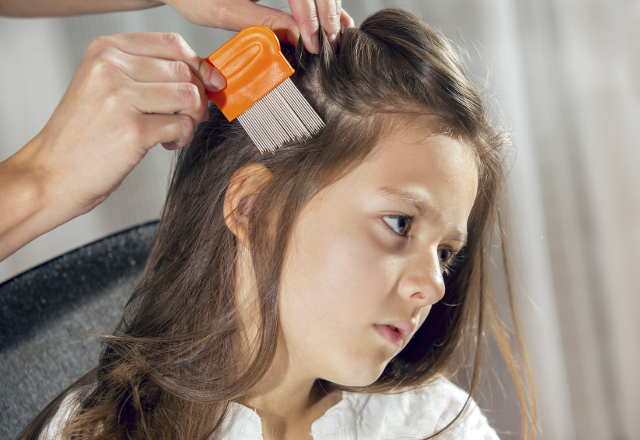
Unmasking ‘Super Lice’: What You Need to Know
Lice are small insects that parasitize humans and cause a disease called pediculosis. They feed exclusively on blood, prefer warm, dark, and humid environments, and lay their eggs in hair shafts.
What are the species of this insect?
Three types of lice parasitize humans: the head louse (Pediculus humanus capitis), the body louse (Pediculus humanus corporis ), popularly called ‘muquirana,’ and the pubic louse (Phthirus pubis), known as ‘boring.’ ‘.
How is their lifecycle?
The female louse lays her eggs, known as nits, wrapped in glue that adheres to the hair shafts. Seven to Ten days later, these eggs release the nymphs – the name of the stage of the louse as soon as it leaves the egg. Nine to 12 days later, the nymphs reach adulthood. At this stage, lice live for about 30 days and will feed on blood and mate, restarting the cycle. The female produces, on average, 150 to 300 eggs throughout her life. High temperature is an important factor in the proliferation of head lice. The higher the temperature, the faster the louse develops inside the egg. Therefore, there is a higher incidence of the insect in the summer.
How Does The Transmission Take Place?
Despite being an insect, the louse cannot fly since it does not have wings, nor to jump, as it does not have legs adapted for jumping, as is the case with the flea. Transmission can occur in two ways: through direct contact, touching heads to take a picture, for example, or by sharing objects of personal use, such as combs and brushes, hair ties and scarves, caps, helmets, and pillows, between others.
How to prevent it?
Utilizing a simple measure, it is possible to prevent the proliferation of pediculosis. Avoid sharing objects for personal use, such as caps, combs and brushes, hair ties, scarves, headbands, or helmets.
What Causes The Itch?
Itching is the first symptom of the manifestation of pediculosis due to the body’s reaction to the feeding of the louse. To be able to feed on our blood, the louse uses two substances present in its saliva. When finding a blood vessel, the insect injects saliva at that location. An anesthetic enzyme prevents humans from feeling pain when the insect’s mouthparts penetrate the scalp. During feeding, another enzyme comes into action: with an anticoagulant function, it prevents the blood from clotting in the intestine of the louse. Combining these substances promotes a reaction in the human body, manifesting as intense itching, which usually starts behind the ear or in the nape of the neck. Another symptom that can manifest itself, especially in children, depending on the amount of head lice,
What Is The Most Effective Way To Get Rid Of Head Lice?
The best way to get rid of super lice is through the daily use of a fine-toothed comb. For this, the child must be positioned on his back, sitting, with a white cloth on his shoulders to facilitate the visualization of the removed lice. With the hair divided into parts, the fine comb should be used from the base to the end of the strands. To make it easier, a combing cream can be used. This recommendation is fundamental because the available products do not affect the nit, which is the lice egg. To remove the nit, it is recommended to use a mixture of water and vinegar in the same proportion. Apply a piece of cotton soaked in the solution to three or four strands of hair, from root to tip. This is a safe homemade recipe that poses no risk to human health.
What Is The Risk Of Using Alternative Methods To Combat The Disease, Such As Insecticides Or Hair Dyes?
No type of product should be used without medical advice from LiceDoctors for example. The scalp works as a sponge that absorbs what is applied to the head. Therefore, caution is needed. Hair dyes and insecticides may kill lice but won’t eliminate nits. In addition, this material contains toxic substances that can cause injuries and infections in the child. Another common myth is using plants, commonly associated with natural treatments. However, its misuse can cause allergies and should also be avoided.
